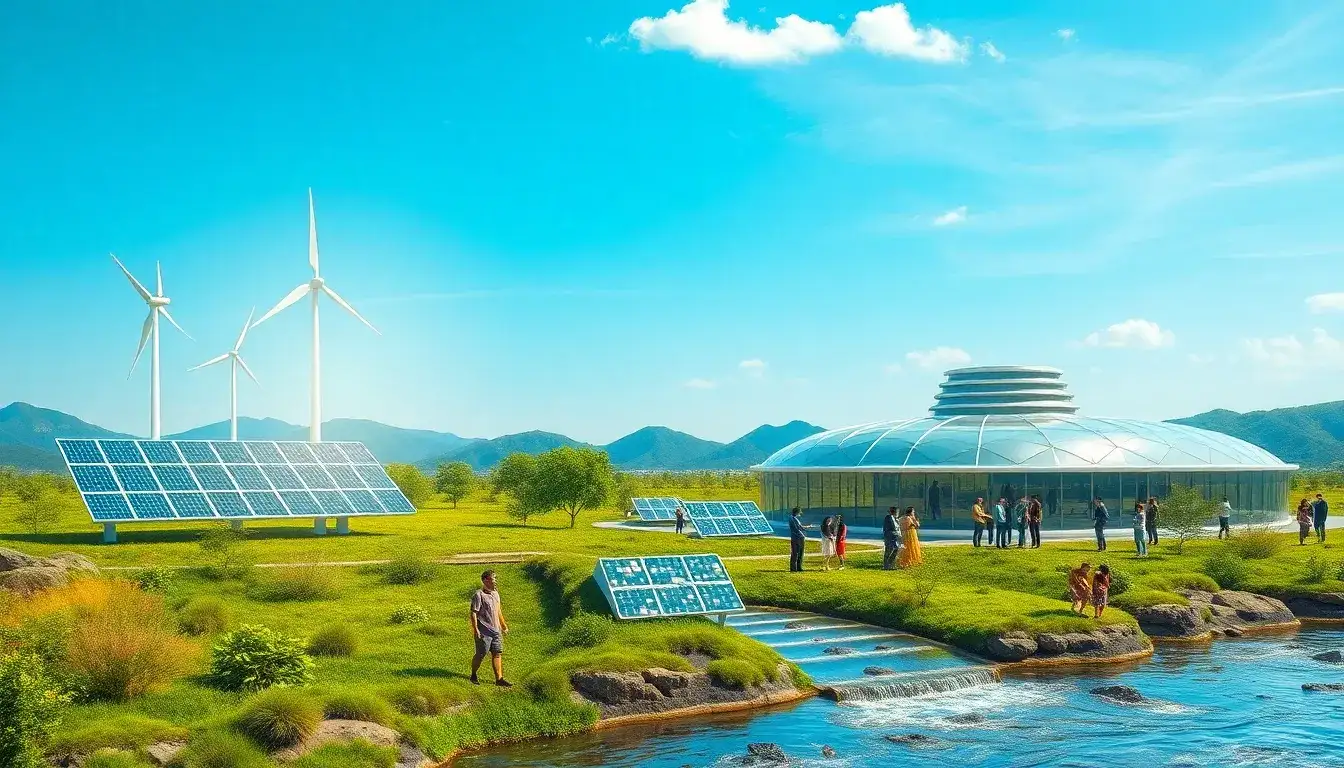
Accelerating the Construction of a New Energy System for a Shared Green Future (Focus on the Boao Forum for Asia Annual Conference 2025)
On March 25, the “Boao Near-Zero Carbon Demonstration Zone,” operated by China COSCO Shipping Group, was officially renamed the “Boao Zero Carbon Demonstration Zone.” This area features a new “Zero Carbon Bar” exhibition space and highlights such as new energy shuttle buses and electric vehicles that circulate within the zone. The green “flower turbines” dance in the breeze, while photovoltaic-powered robotic arms create cups of “zero carbon coffee” for guests from various countries. The color green has become the thematic backdrop of the Boao Forum for Asia Annual Conference 2025, held on Dongyu Island in Boao, Hainan, where the zero-carbon concept has transformed into an accessible lifestyle practice that has left a lasting impression on many participants.
During the conference, numerous thematic sub-forums were held on new energy and green development. Attendees engaged in thought-provoking discussions, sharing ideas and exploring collaborative paths for building a new energy system, aiming to offer a “Boao Solution” for advancing global sustainable development. Zhang Jun, Secretary-General of the Boao Forum for Asia, emphasized that creating a new energy system and promoting green development is essential for global progress. This approach can stimulate new industries, models, and drivers, generating new economic growth points. Green development is increasingly establishing a new growth paradigm that harmonizes economic, social, and ecological advancement across many Asian regions.
At the new energy thematic sub-forum on the morning of March 26, Song Hailiang, Chairman of China Energy Construction Group, shared the active role of Chinese enterprises in constructing a global new energy system and building a clean and beautiful world. He stated, “Under the high-quality co-construction of the Belt and Road Initiative, we are providing green and advanced solutions for energy planning in partner countries and engaging in extensive cooperation on energy transition technologies and investments, pursuing win-win and multi-win outcomes.”
According to the International Energy Agency’s Global Energy Review 2025, renewable energy and nuclear power are expected to account for 80% of the global electricity generation growth in 2024, representing 40% of the total global electricity generation. The global installed capacity for renewable energy is projected to grow by approximately 25% in 2024. China is expected to continue its rapid growth in renewable energy installations, accounting for nearly two-thirds of the total global increase, with solar photovoltaic capacity surpassing 340 gigawatts, marking a 30% increase from 2023.
Since the 14th Five-Year Plan, China has accelerated the development of a modern energy system and proposed the establishment of a new power system. By the end of July 2024, the installed capacity of wind and solar power in China reached 1.206 billion kilowatts, exceeding the target set at the Climate Ambition Summit of achieving over 1.2 billion kilowatts by 2030, thereby steadily leading the world in fulfilling climate change commitments and advancing energy transition.
Jeffrey Sachs, Director of the Center for Sustainable Development at Columbia University, noted, “China is at the forefront of global sustainable development. It leads the world in zero-carbon energy, adding more solar power capacity each year than the total of all other countries combined.” John Keane, a political science professor at the University of Sydney, added, “China’s sustainable growth policies in global cooperation are vital for maintaining and developing a green economy.”
China’s State Power Investment Corporation is aiding in the protection of green sea turtles at the Hunutlu power plant in Adana, Turkey. Additionally, China Southern Power Grid is collaborating with Lancang-Mekong countries to build interconnected power grids, while China Shipbuilding Industry Corporation has delivered a 7,500-cubic-meter liquefied carbon dioxide transport vessel, “Arctic Pioneer,” to Norway, promoting carbon capture and storage in Europe. Through these efforts, China is actively contributing to global climate governance and green transformation while following a path of high-quality green and low-carbon development that suits its national conditions.
Zhang Jun emphasized the need for strong international cooperation to address energy transition and climate change, stating, “The efforts required cannot be achieved by any single country alone; we must establish robust international cooperation mechanisms that involve all nations.” Norwegian Ambassador to China, Wegger Chr. Strømmen, expressed the importance of green cooperation between nations, urging practical collaboration to promote energy transition.
“Building a clean, electricity-centered, interconnected, and intelligent Asian energy internet will provide systematic solutions to promote energy security, low-carbon, inclusive, and sustainable development in Asia,” stated Xin Baoan, Chairman of the Global Energy Interconnection Development and Cooperation Organization and President of the China Electricity Council. This organization, initiated by China, is committed to providing a dialogue platform and intellectual support for global energy transition cooperation.
Yew Wen, an honorary researcher at the Institute of China Studies in India and an associate professor at Jawaharlal Nehru University, remarked, “In the clean energy sector, China offers products, experiences, and technologies, especially affordable technologies, playing a significant role in the global energy transition.”
(Contributions to this report were made by Yu Jinghao and Liu Lingling.)







